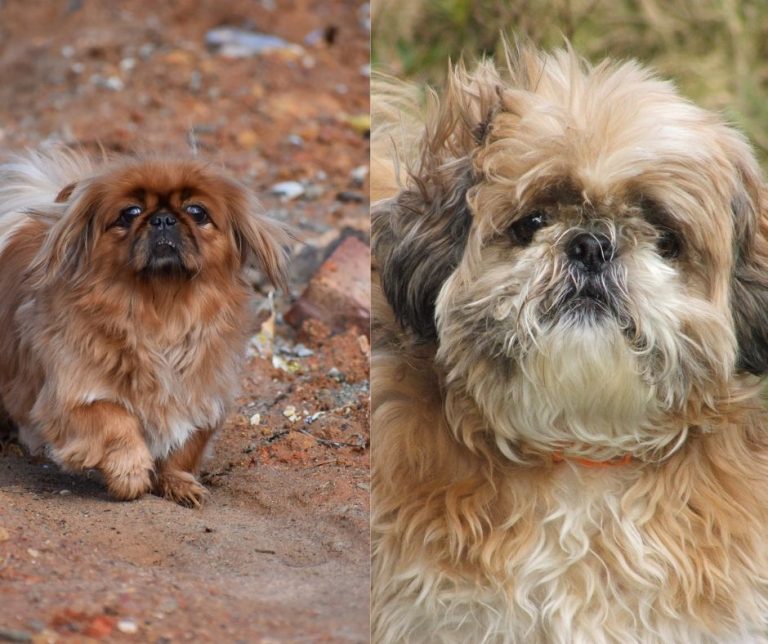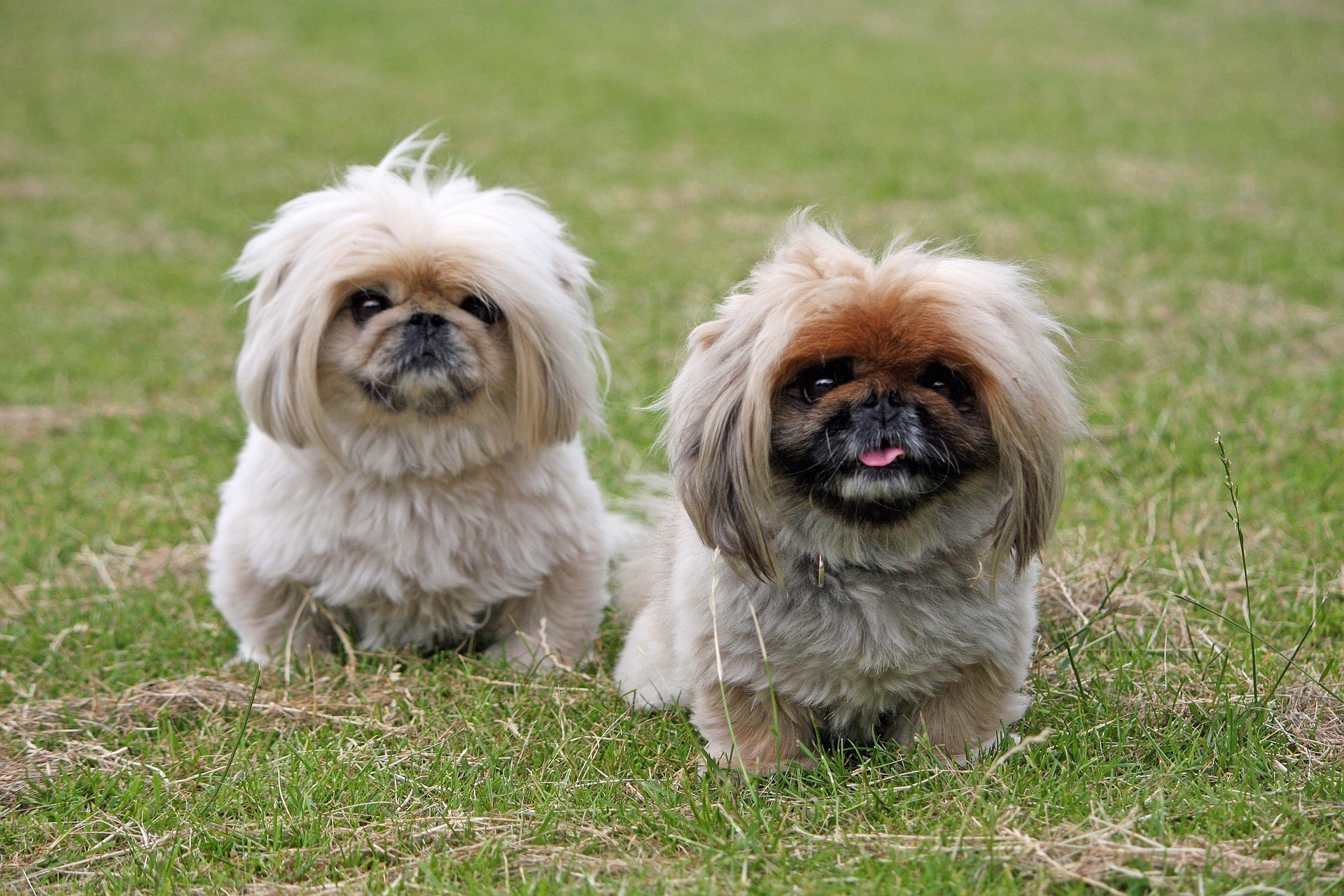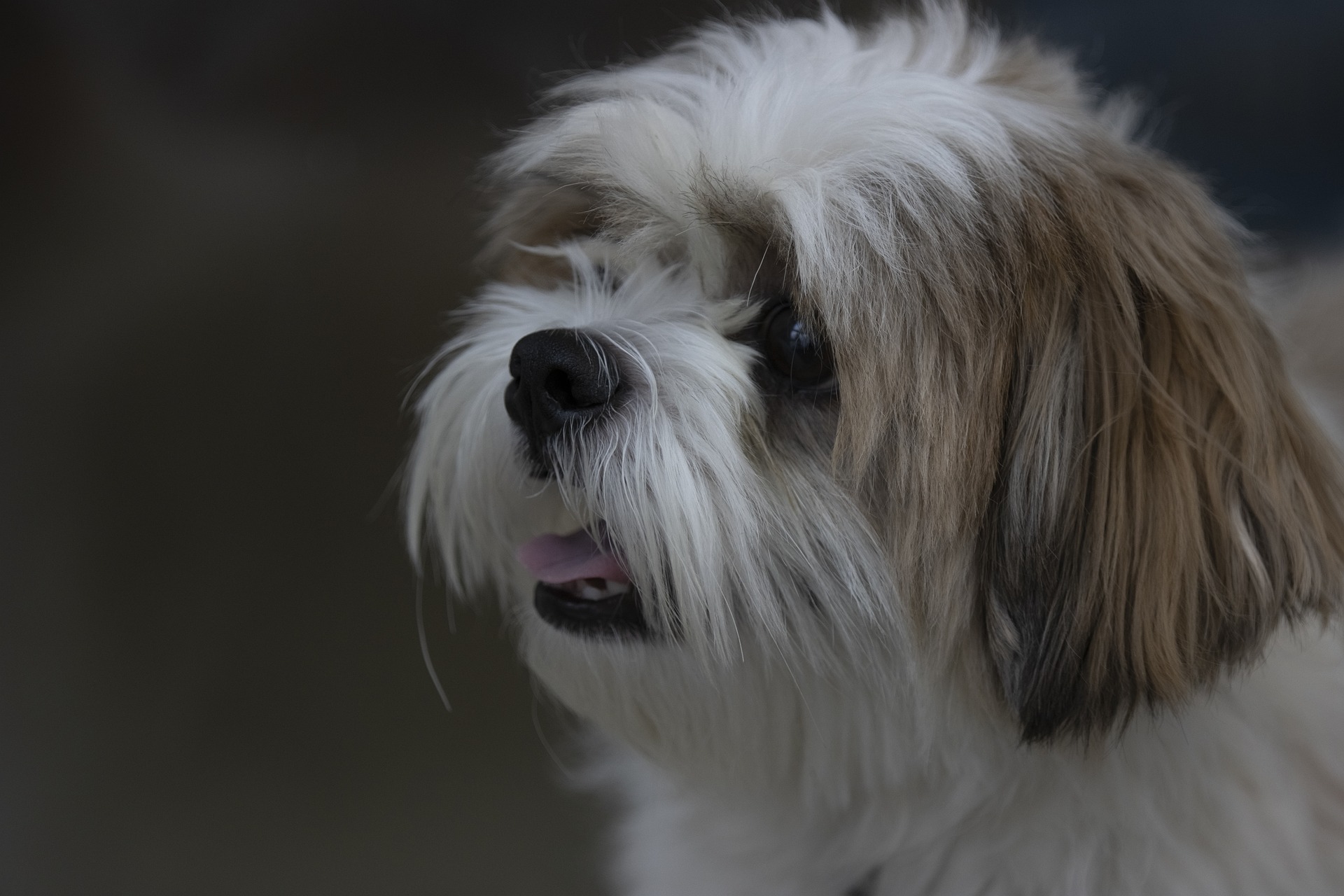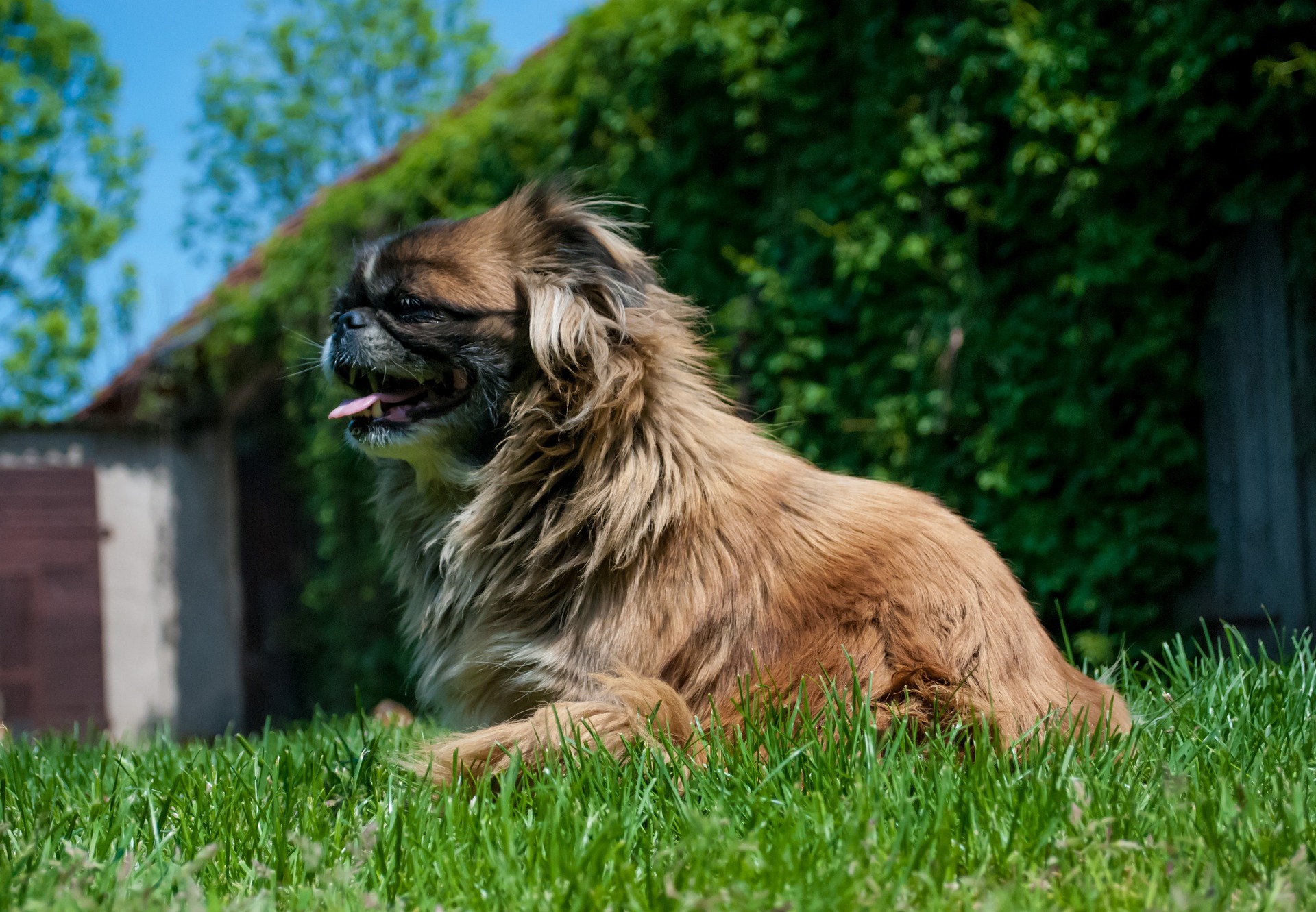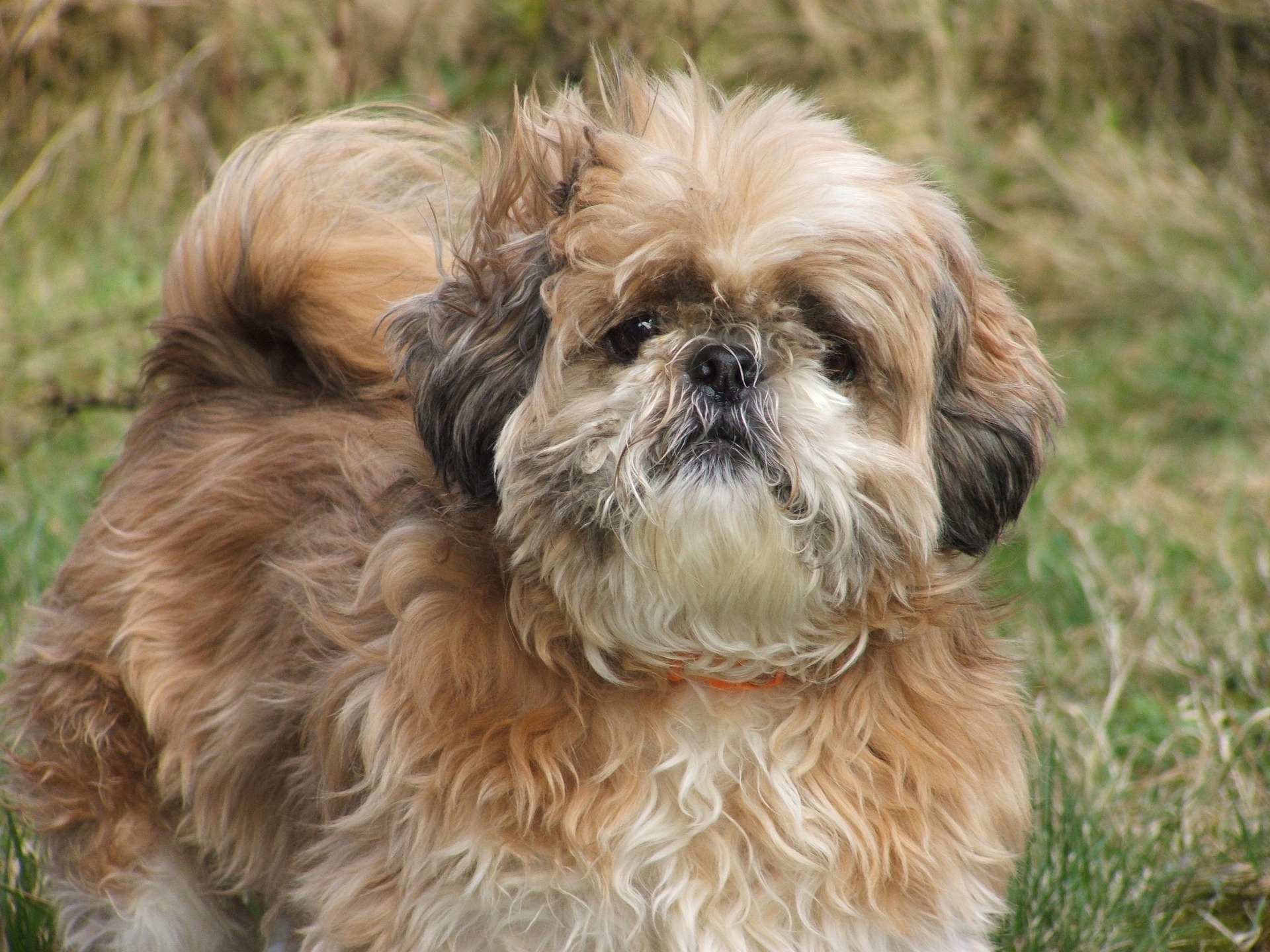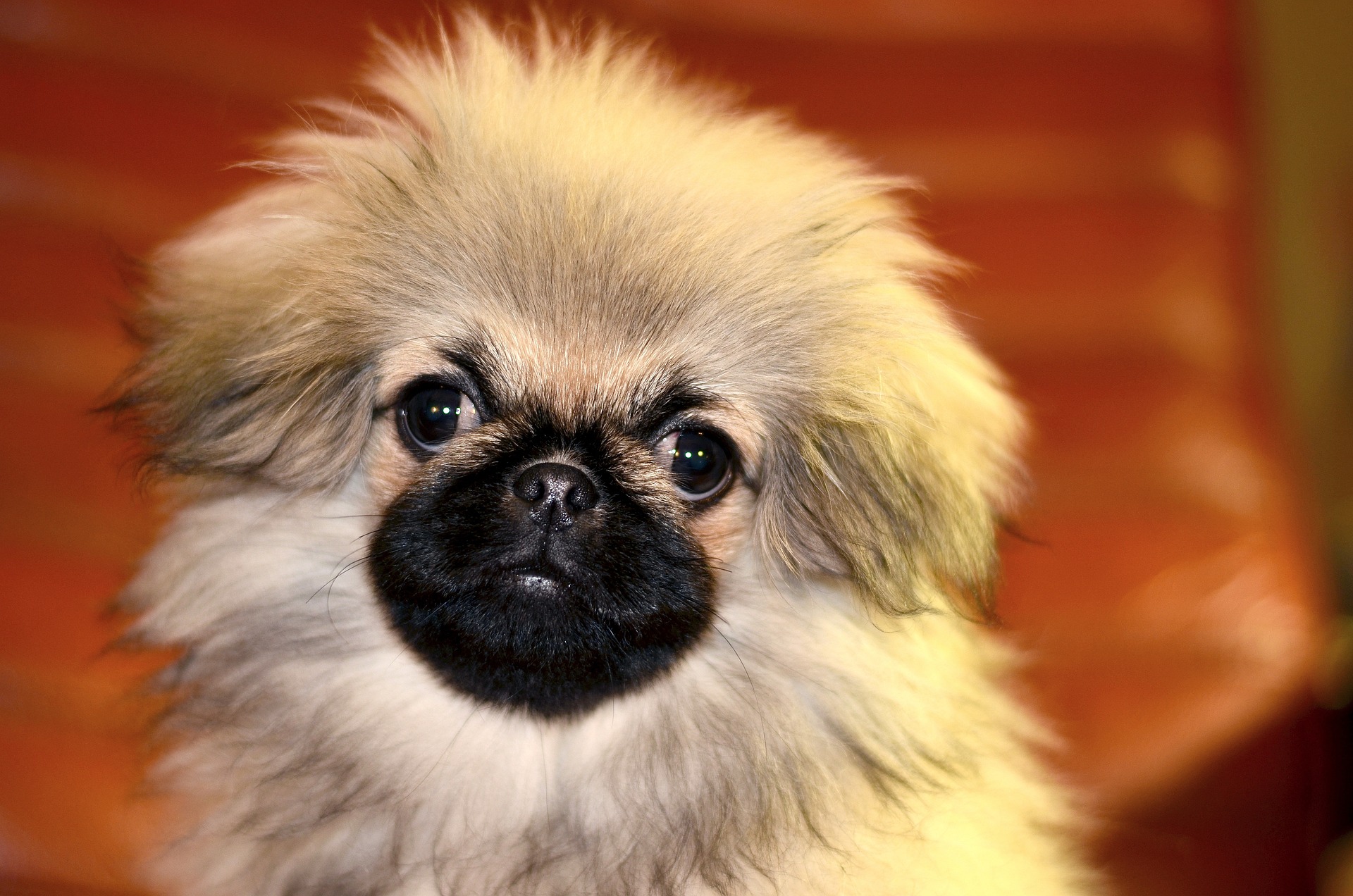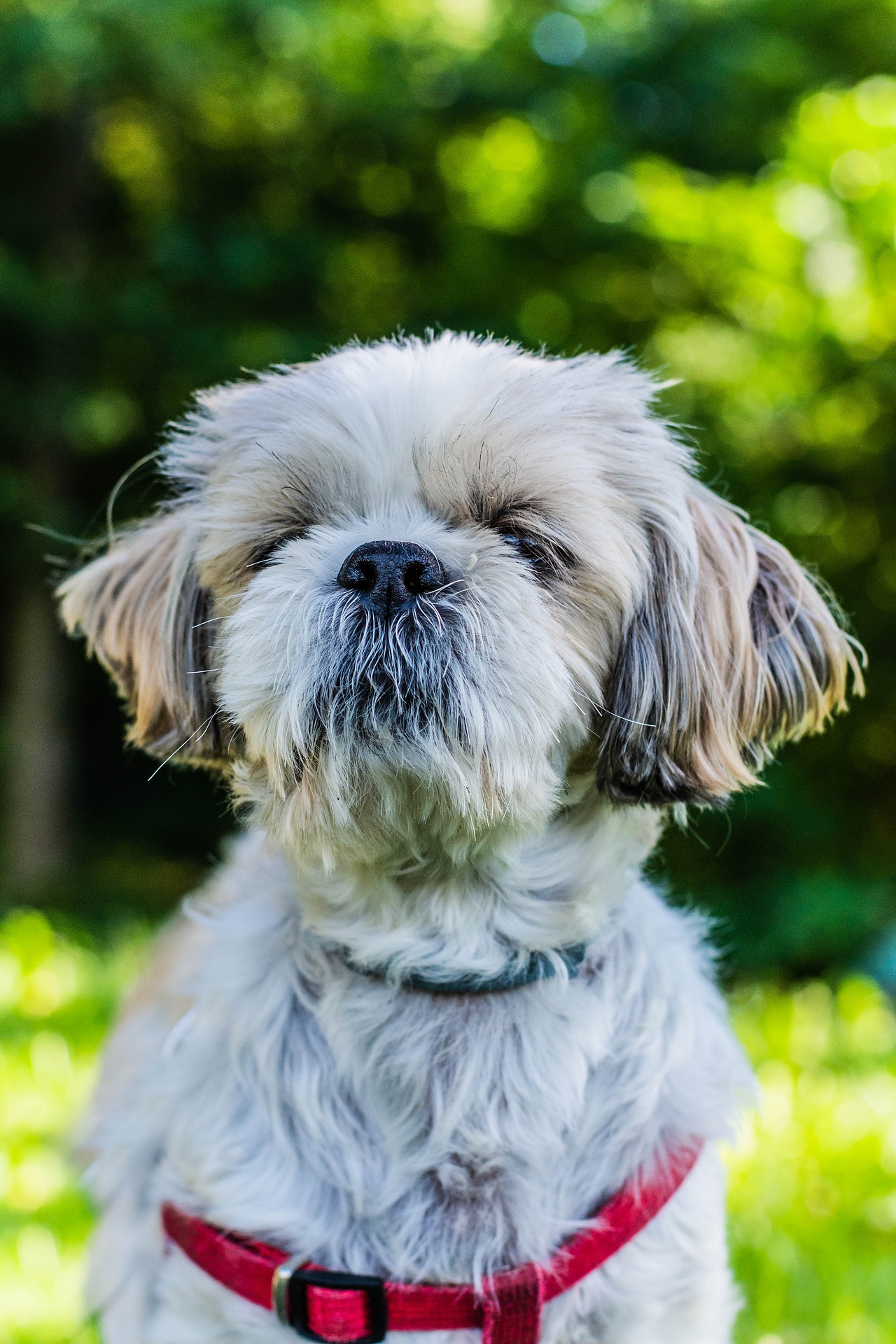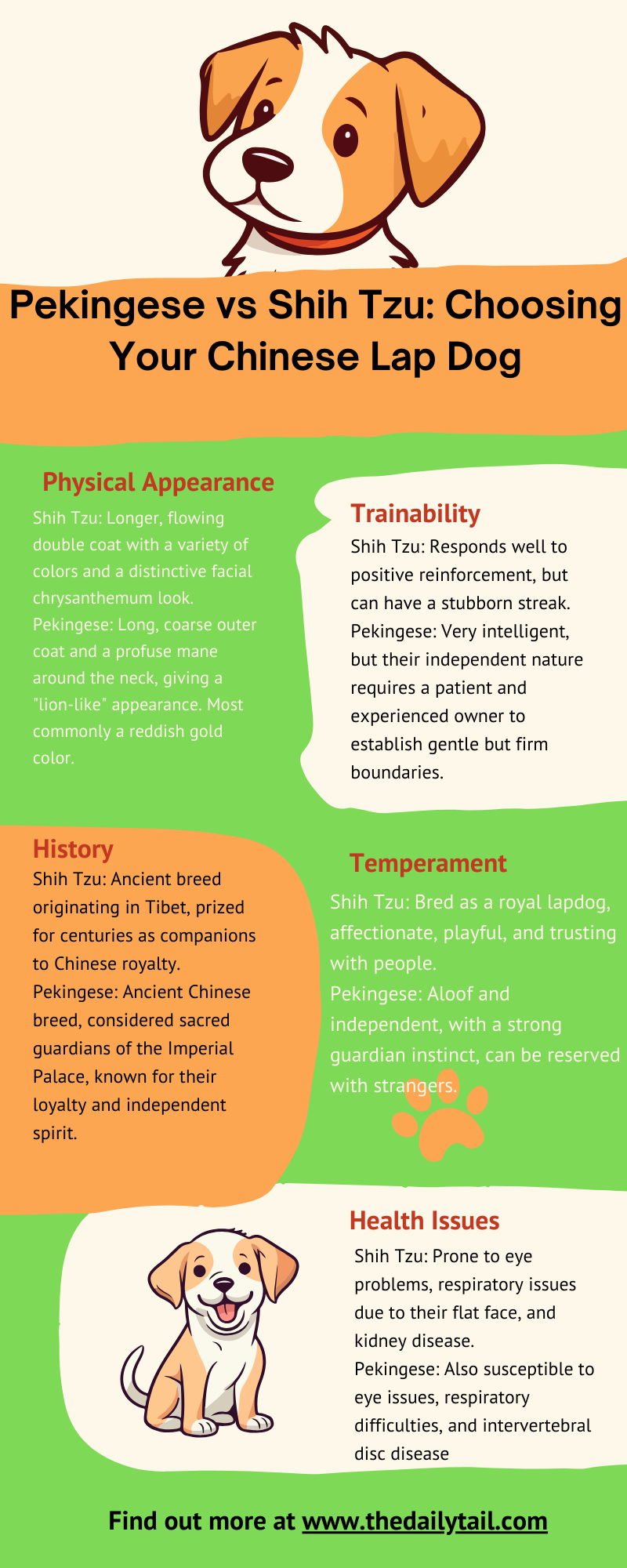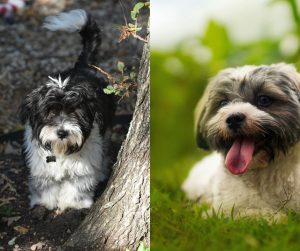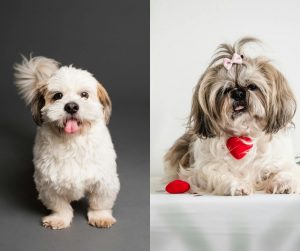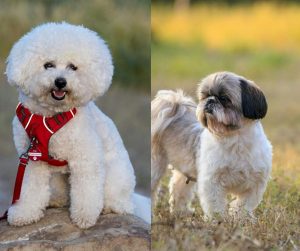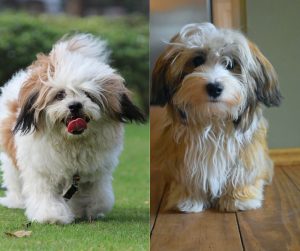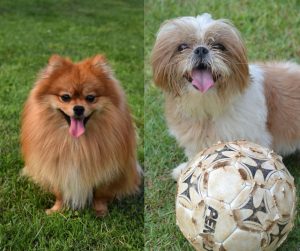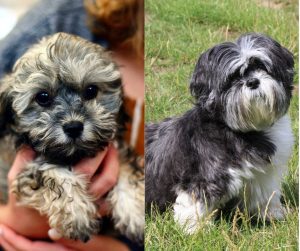As someone who appreciates the unique charm of long-haired toy breeds, I’ve seen firsthand the distinctions between the gentle Shih Tzu and the dignified Pekingese. Let’s delve into what sets them apart.
When comparing the Pekingese and the Shih Tzu, prospective pet owners are often drawn to their shared ancestry within the toy group, yet find these breeds have distinct characteristics that set them apart.
Both breeds boast a rich history, hailing from royal Chinese lineages, and today, they fill homes with their unique charm and personality.
Despite their similar origins, each breed presents its own set of physical features and temperamental traits that cater to different lifestyles and preferences.
Splitting the text here to separate the two paragraphs.
Understanding the nuances of the Pekingese and Shih Tzu is essential for making an informed decision on which breed might be better suited to become part of one’s family. So let’s take a deep dive into the Pekingese vs Shih Tzu dog breed comparison.
The Pekingese is known for its distinctive body shape that tends to be heavier in the front, along with a flatter face and a luxurious, thick coat that demands substantial grooming.
Meanwhile, the Shih Tzu is celebrated for its long, flowing coat, which sheds minimally, and a more evenly proportioned frame.
Splitting the text here to separate the two paragraphs.
In terms of companionship, the Pekingese can exhibit a bold demeanor and serve as vigilant watchdogs, while the Shih Tzu tends to be particularly affectionate and sociable, thriving on human interaction.
When considering either breed, it is important to take into account such personality traits, as well as the dog’s exercise requirements, grooming needs, and overall health, all of which contribute to a harmonious living situation.
Key Takeaways
- Pekingese and Shih Tzu share rich Chinese origins but have distinct physical and temperamental differences
- The Pekingese has a heavier front, flatter face, and requires extensive grooming; the Shih Tzu has a long coat that sheds less and a more balanced body shape
- Choice between breeds depends on owner’s lifestyle, with Pekingese being independent watchdogs and Shih Tzus needing more human companionship
Origins and History
When exploring the rich tapestry of dog breeds, few have origins as steeped in history and royalty as the Pekingese and Shih Tzu. These dogs were more than mere pets; they were symbols of ancient Chinese nobility. It is worth noting that while they have their origin in Ancient China, both dogs are recognized by the American Kennel Club.
The Ancient Roots of the Pekingese
The Pekingese breed hails from the ancient city of Beijing, formerly known as Peking, hence its name. They lived in the lavishness of the Chinese Imperial court and were regarded not merely as dogs but as “lion dogs,” a term inspired by their resemblance to Chinese guardian lions.
These dogs were so revered that stealing one meant death. They weren’t just adored companions; they were also talismans believed to ward off evil spirits.
The Shih Tzu’s Royal Chinese Heritage
Similarly, Shih Tzu dog breed has a lineage that places them within the enclaves of Chinese royalty. They are often associated with the Ming and Manchu dynasties. Shih Tzu shares a similar ancestry with another dog from Tibet, the Lhasa Apso.
“Shih Tzu” translates to “lion dog” in Mandarin, sharing this prestigious title with their Pekingese counterparts.
Their history is tied to the palaces of Tibet and China, where they were seen as a cherished member of the royal family—a gift to Chinese emperors from the Dalai Lama.
Splitting the text here to separate the two paragraphs.
Both the Pekingese and Shih Tzu breeds boast an extensive heritage that reflects their esteemed positions in ancient Chinese culture. They weren’t just pets. They were protectors, symbols, and emblems of royal life, treated with a regard that has seeped into the way we see these breeds today.
Physical Characteristics
When distinguishing between Pekingese and Shih Tzu breeds, their distinct physical characteristics stand out. It’s all in the details of their fur, face, and size that set them apart.
Pekingese Appearance
The Pekingese sports a luxurious double coat, with the outer layer being long and coarse, and the undercoat soft and thick, adding to their regal bearing.
They possess a distinctive flat face, sometimes referred to as “brachycephalic,” which contributes to their noble expression. But being a brachycephalic dog breed has its own downsides as well. They are more prone to breathing issues. This is why breeders are trying to mix the Pekingese dog breed with other breeds to get a healthier version.
Typically, their ears are heart-shaped, framing a set of large, prominent eyes. Often heavier in the front, Pekingese dogs carry themselves with a sturdy, albeit compact, frame, showcasing their famous “lion’s mane” around their necks. Their tail is high-set and arches over the back in a proud flourish.
- Size: Lengthwise, they range from 6 to 9 inches in height
- Coat: Thicker in the front, with a prominent ruff around the neck
- Face: Notably flat with a broad, short skull
Shih Tzu Features
On the flip side, Shih Tzus flaunt a long, flowing silky coat, which requires regular grooming to maintain its sheen and to prevent tangles.
Their hair can come in various colors and is less prone to shedding than one might expect.
Shih Tzus also exhibit a slightly less brachycephalic face compared to the Pekingese but maintain the wide-eyed and warm expression typical of the breed.
Their ears drape down beside the face, adding to their charming appearance. They are somewhat longer than they are tall, with a tail that curls over their back.
- Size: Generally standing at 9 to 10 inches at the shoulder
- Coat: Long, dense, and naturally flowing
- Face: Short-nosed with a less pronounced flatness than Pekingese
Personality and Temperament
When choosing between a Pekingese vs Shih Tzu, understanding their unique personalities and temperaments is crucial. They may be small, but their characters are large, each breed offering a distinct blend of traits that cater to various preferences in companion dogs.
Pekingese Disposition
Pekingese are known for their bold and confident character. Despite their petite size, they carry a dignified and slightly aloof personality.
They can be quite loving with their family, but they often exhibit a stubborn streak that may challenge training efforts.
It’s their intelligence and self-assured nature that shape this breed’s unique personality.
- Affectionate: Yes, but on their terms
- Intelligent: Highly intelligent, yet independent
- Sociable: Reserved with strangers
- Stubborn: Can be challenging to train due to their independent nature
- Playful: Moderately playful; they enjoy a good game but also value their rest
Shih Tzu Temperaments
In contrast, Shih Tzus might just be the epitome of a companion dog, with their friendly and affectionate nature.
They thrive on human company and are more than happy to snuggle up for some love and attention.
Shih Tzus are also playful and charming, making them great family pets that get along with children and other animals.
- Affectionate: Extremely affectionate, adores being with people
- Friendly: Welcoming to both family and strangers alike
- Temperament: Generally happy and easygoing
- Intelligent: Smart and capable, but sometimes prefers cuddling over commands
- Playful: Loves to play and participates actively in family activities
Health and Care
When bringing a Pekingese or Shih Tzu into your home, it’s important for owners to understand their specific health needs and care routines. Both breeds have their charm but require a certain level of commitment to ensure they live happy, healthy lives. Because they are brachycephalic dogs, they are more prone to breathing issues.
Common Health Concerns
The Pekingese and Shih Tzu share some common health concerns, though their risks may vary.
They’re both prone to patellar luxation, where the knee cap slips out of place, and hip dysplasia, a malformation of the hip joint that can lead to arthritis.
Due to their prominent eyes, they can experience eye issues like cataracts, which cloud the lens and can lead to blindness, or keratitis, inflammation of the cornea.
Both breeds are also susceptible to progressive retinal atrophy, a degenerative disease affecting the retina that can also cause blindness.
Breathing difficulties are another concern, particularly for the Pekingese, due to their flat faces.
Regular veterinarian check-ups are crucial to monitor these conditions early on, as timely intervention can make all the difference.
Grooming and Daily Care
Grooming is an essential part of caring for both Pekingese and Shih Tzus. Their coats require regular brushing, ideally a few times a week, to prevent tangles and matting.
Shedding is moderate to high in both breeds, so be prepared for a bit of extra cleaning around the house.
Splitting the text here to separate the two paragraphs.
Here’s a checklist for grooming:
- Brushing: Several times per week
- Eye cleaning: Daily, to prevent infections like dry eye
- Ear cleaning: Weekly, to prevent ear infections
- Bathing: Monthly or as needed
Dealing with allergies may also be part of the routine, as both breeds can be prone to them.
Using hypoallergenic shampoos and keeping a clean environment can help alleviate symptoms.
Living With a Pekingese or Shih Tzu
When considering whether a Pekingese or a Shih Tzu would fit into your home and lifestyle, it’s important to understand their different temperaments and needs. These companion dogs offer boundless affection and can thrive in various environments if their specific requirements are met.
Home Environment and Lifestyle
Pekingese are known for their independence. They can be quite content in smaller living spaces, like apartments, as long as they have their own spot to recline.
They require moderate daily exercise but are generally less active, making them suitable for a more laid-back lifestyle. Their thick coat means they’re not the best companions for outdoor adventures in hot weather.
Shih Tzus, on the other hand, are adaptable to most living situations. They are usually happy to live as indoor companions. They appreciate the comfort of close contact and are prone to follow their family members from room to room.
With their affectionate nature, they’re great with family and kids. They have a pet-friendly disposition, always ready to make friends with other family pets.
- Suitable for small homes or apartments: Yes (Both)
- Family-friendly: Moderately (Pekingese), Yes (Shih Tzu)
- Other pet-friendly: Yes (Both)
- Exercise needs: Moderate (Pekingese), Low to Moderate (Shih Tzu)
Training and Socialization
Training Pekingese can be a bit challenging due to their independent nature. Patience and positive reinforcement are key, as they can be stubborn.
On the other hand, Shih Tzus are generally eager to please and may pick up on training more readily. Though they too benefit greatly from a consistent and gentle approach.
Both breeds enjoy being treated as loyal companions rather than being put through rigorous training routines.
Early socialization is crucial for both Pekingese and Shih Tzus to ensure they become well-rounded family pets. Introducing them to different people, pets, and experiences as puppies can help prevent any territorial or nervous behaviors.
- Training approach: Positive Reinforcement (Both)
- Trainability: Challenging (Pekingese), Less Challenging (Shih Tzu)
- Socialization needs: High (Both)
Adoption and Choosing the Right Breed
When adopting a Pekingese or Shih Tzu, potential pet parents should carefully consider breed characteristics to ensure they can meet the dog’s needs and provide a loving home.
Considerations for Potential Owners
Pekingese are small yet sturdy canines with a weight range typically between 7 to 15 pounds. They usually stand about 6 to 9 inches tall. Their lifespan is around 10-15 years.
Prospective owners should note their moderate exercise needs—around 30 minutes a day should suffice. While they bring intelligence and loyalty, they also have a reputation for being somewhat stubborn, which can challenge training efforts.
On the other side, Shih Tzus often weigh slightly more. They can go up to an adult weight of about 10.5 inches at the shoulder and can weigh around 9 to 10 inches high. They share a similar lifespan with the Pekingese, generally living for about 10 to 18 years.
Unlike the Pekingese, Shih Tzus are known for their daily low shedding. The exercise needs for a Shih Tzu are comparable; however, they are known for being particularly affectionate and friendly, making them superb companions especially for those who may be first-time dog owners.
Both breeds are adaptable and can thrive in various living environments, from apartments to houses with yards, as long as their exercise needs are met. Each of these breeds exhibits a high degree of loyalty and affectionate nature towards their owners. They differ, however, in energy levels, with Pekingese being less energetic compared to the lively Shih Tzu.
Potential health concerns are a significant factor as both breeds can be prone to certain breed-specific issues. Pekingese may face health challenges such as breathing problems due to their flat faces, while Shih Tzus can suffer from eye conditions given their prominent eyes. Regular check-ups with a veterinarian can help mitigate these issues.
Finding Your New Companion
To find a Pekingese or Shih Tzu, one might begin by contacting breed-specific rescue organizations or checking local animal shelters.
It’s crucial to look for reputable breeders if choosing to buy from a breeder. Make sure they perform health screenings and provide a clean, caring environment for their pups.
Online listings can also be helpful, but vetting and visiting in person is essential to avoid supporting puppy mills or dishonest sellers.
One can be prepared by bringing questions about the dog’s health history, temperament, and any previous training.
When meeting a potential new furry family member, make sure to spend time interacting to gauge compatibility.
Since these dogs are known for their intelligence and friendliness, they often make connections with prospective owners rather quickly.
Remember, welcoming a dog into one’s home is a long-term commitment that comes with responsibilities and rewards alike.
Matching a dog’s temperament and care requirements with the owner’s lifestyle helps ensure a harmonious and loving relationship.

